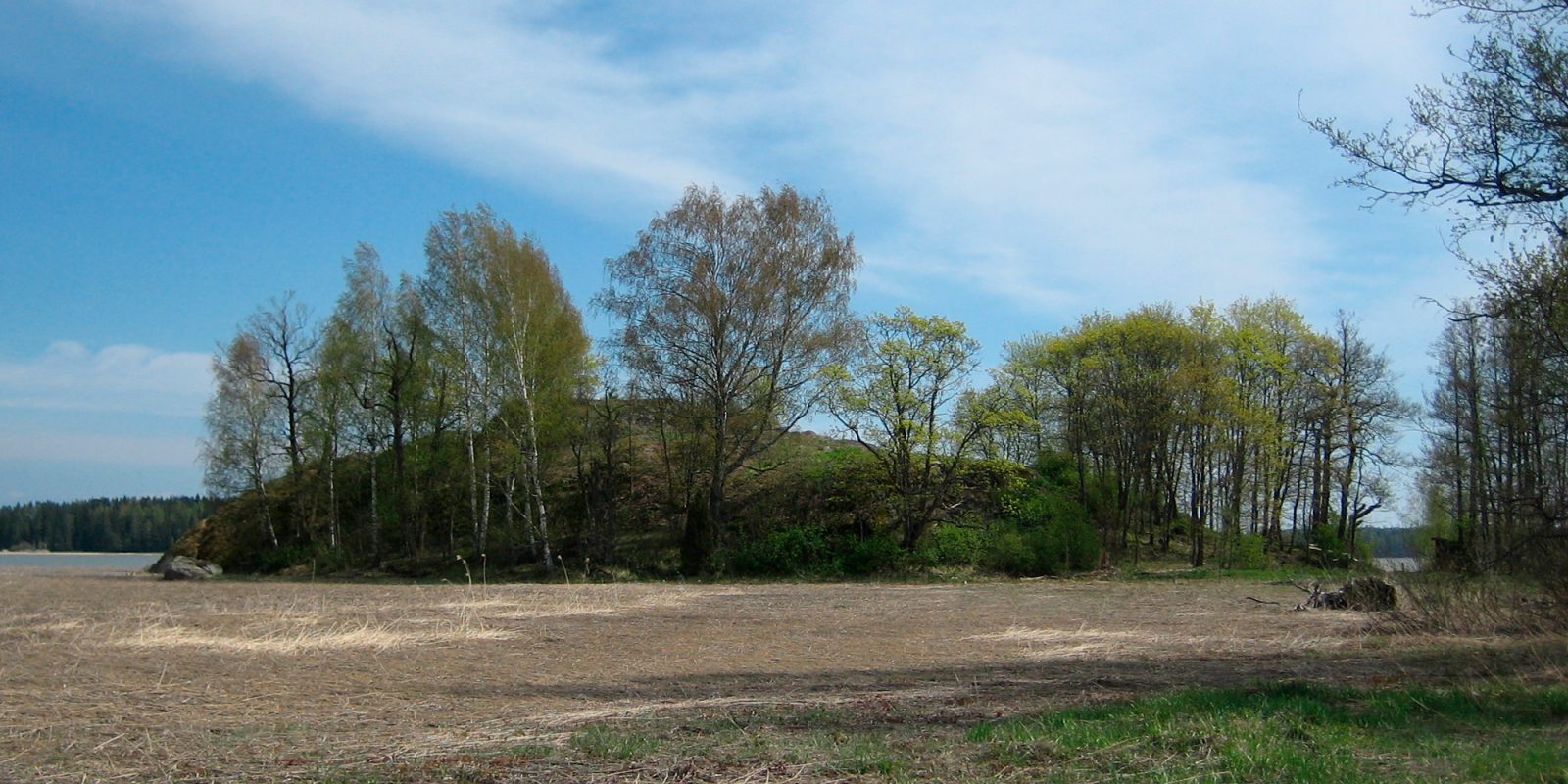
Hiking at and visiting archaeological sites
There are archaeological monuments and relics in all kinds of environments, including forests, agricultural land and residential areas. Many of the archaeological sites on land and in water are fascinating places to visit as they tell stories of human lives and actions in different times.
Some sites have been equipped as attractions, and they include information boards, for example, to provide additional information for visitors. Such sites may also have a parking areas and a guided trail to the relic. Most archaeological sites have not been equipped as attractions, but information about them is available on the internet, in the ancient relics register of the Finnish Heritage Agency and the guide on archaeological cultural heritage.
The Antiquities Act (295/1963) protects archaeological sites, and no one is allowed to dig, cover, disassemble, damage or alter the site without permission granted under the Act. This ensures that the archaeological site and the information contained by it about past life are preserved as well as possible.
An archaeological site may also be located in a nature reserve. In this case, the Nature Conservation Act and the instructions for moving about in the area under the Act are also observed.
Moving about at archaeological sites
A responsible hiker moves and acts at archaeological sites in a way that ensures that the site and its surroundings are not damaged in any way. For example, making a fire at an archaeological site is forbidden, and smoking is also not recommended so as to avoid wildfires. It is also advisable to avoid cycling so that the structures, vegetation or soil surface of the archaeological site are not damaged. Litter or other items must not be left at the site; visitors must take everything they bring back with them. This way, the site remains clean and safe for other visitors.
Picking plants from archaeological sites is not advised. This is because the plants may be ancient plants, archaeophytes, that are important signs of people’s actions in the area in the past. Some of these plant species may even disappear from the site completely if they are picked during the blooming season. In this case, they cannot reproduce through the seeds they have produced. Archaeological sites may also include the nesting or feeding areas of wild animals, which need to be left undisturbed.
Archaeological sites may also not be safe for visitors, which is important to remember when hiking with children, in particular. Archaeological sites located on rocks may have steep slopes where you may fall from heights after slipping or losing your balance. Fortress areas may sometimes have sudden drops into trenches, for example, which are difficult to spot from farther away. In addition to this, climbing on the rock structures at cairns or ruins is not allowed. The cairn may have loose rocks that may cause the climber to fall and be injured. A ruin that looks intact on the surface may also collapse under a climber.
Moving about on land owned by others
Archaeological sites are located on lands owned by both private individuals or communities and the state. Public areas or those open to the public can be visited freely, but in compliance with the instructions for the site. Archaeological sites located in nature can usually be visited based on the public right of access, on which you can find more information on the website of the Environmental Administration. Movement in the area must not cause disturbance or inconvenience. In areas covered by domestic peace or non-disturbance of public premises, such as yards, access is not allowed without the owner’s approval. Additionally, the provisions of the Road Traffic Act should be taken into consideration when parking on the side of the road, for example. In addition to paying attention to traffic safety, parking in a way that blocks other traffic is forbidden.
Diving to wrecks
When doing recreational diving, you must follow the same principles of responsible visits as on land so that the wrecks and the information contained by them are not harmed. You can affect the preservation of a wreck through your own actions.
When diving close to archaeological sites, anchoring in the wreck is not allowed. Touching the wreck or its parts or items around it is also forbidden. Similarly, taking parts or items from the wreck or its surroundings is not allowed – they must be left where they are. Items or parts of wrecks raised from the water cannot be preserved for long without proper conservation. When diving, you should also note that some wrecks are burial sites, and the deceased are given sanctity of the grave.
Usually, diving close to wrecks is allowed if the site has not been protected under special regulations. When planning the dive, it is a good idea to find out if there are special regulations that restrict movement at the site.
Five wreck sites have protected areas under the Antiquities Act, which prevents free diving. Permission from the Military Museum is required for diving at wrecks from the World Wars. Some wrecks are located in nature reserves that involve restrictions on movement. In addition to this, there are wrecks in protected areas under the Territorial Surveillance Act, and diving in these areas requires permission from the Finnish Defence Forces.
Providing feedback
When moving about at an archaeological site, a visitor may notice things they wish to inform the authorities about. These observations may be about damage to a relic or other information about the condition of the archaeological site. You can send the information to the museums with regional responsibility or the Finnish Heritage Agency. The Finnish Heritage Agency can be contacted online via the feedback form for archaeological sites..